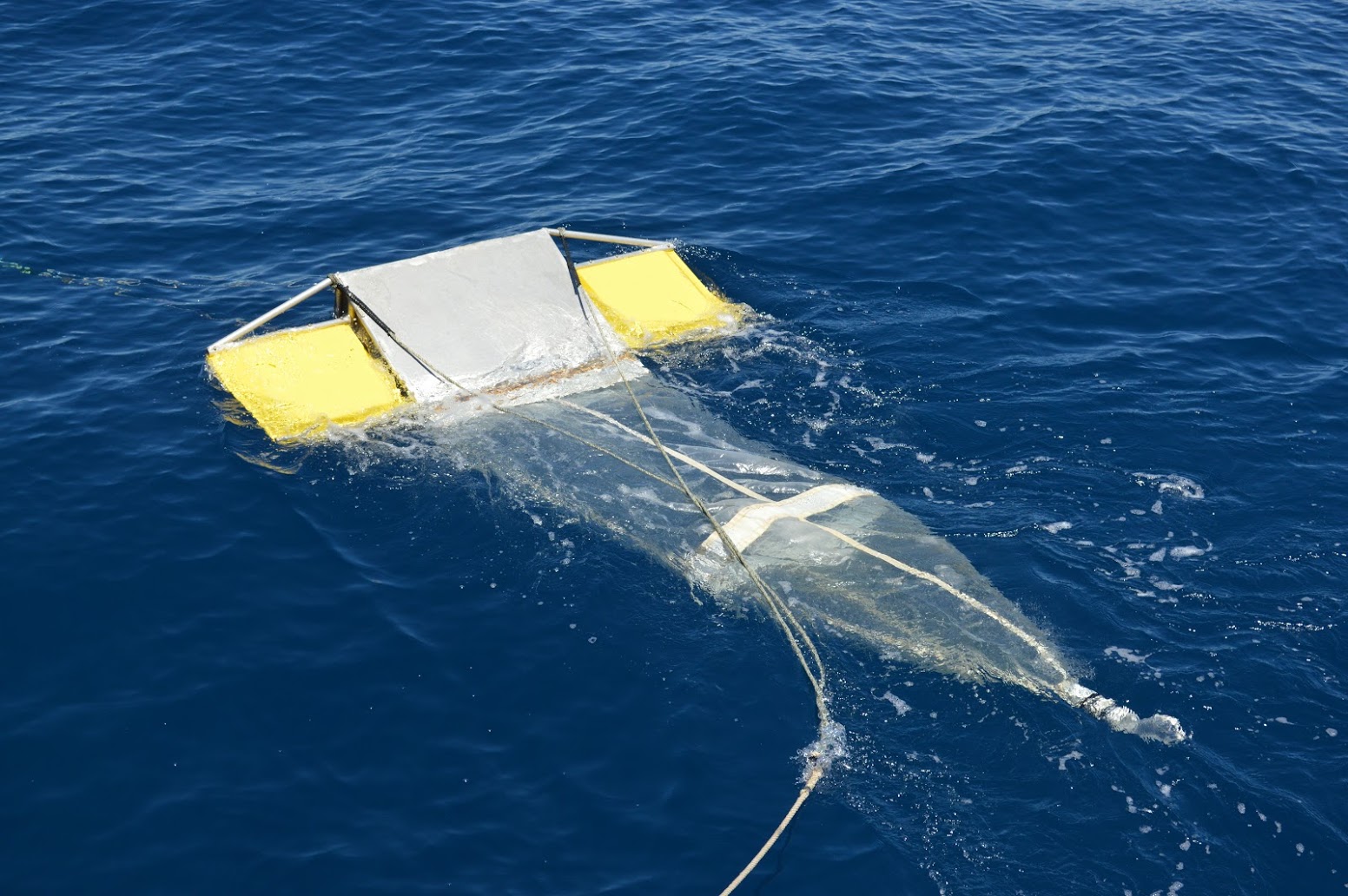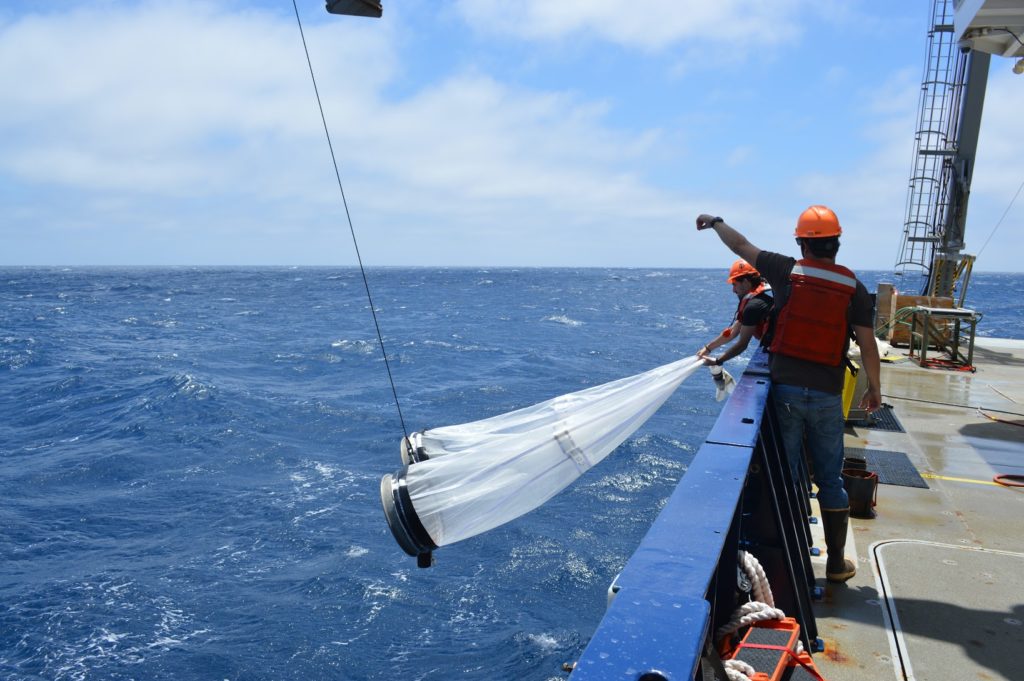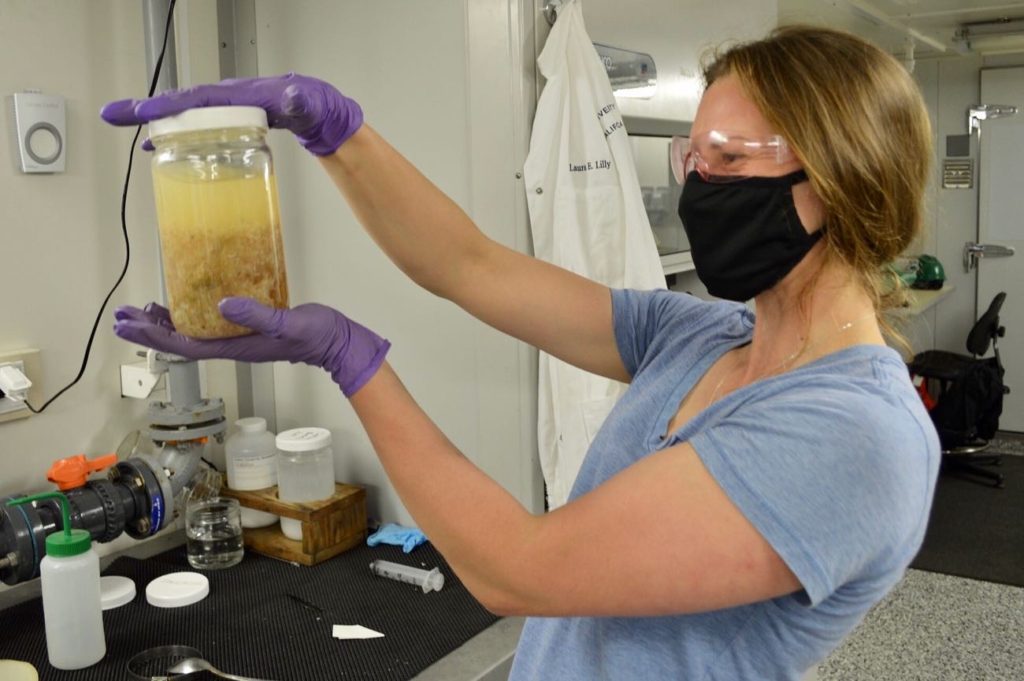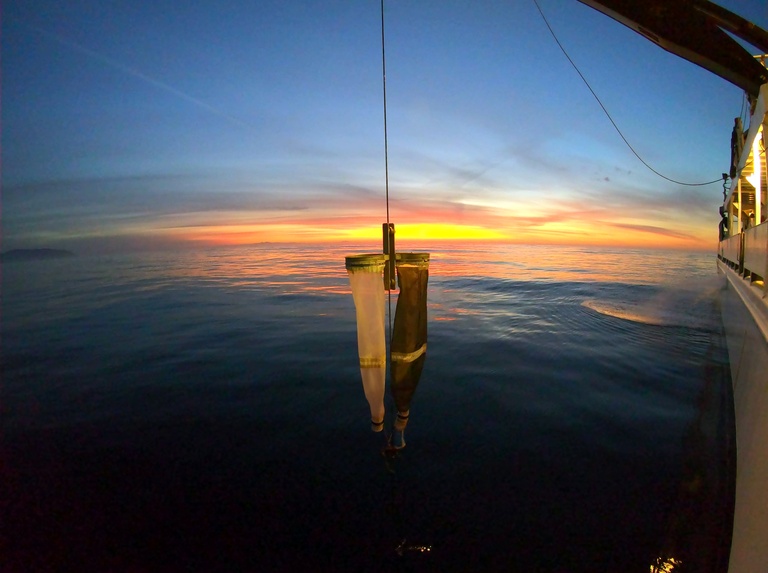
Bongo (CalBOBL) Net Tow

The Bongo Net is towed obliquely through the water column to collect plankton samples from the euphotic zone.
The Bongo Net, formerly “CalBOBL”, consists of paired 505 μm mesh nets with 71 cm diameter openings. The nets are 3 m in length; a 1.5 m long cylindrical portion that is joined to 1.5 m conical portion that tapers to a detachable codend. The nets are attached to a metal frame consisting of two rings connected by a central yoke. The frame is connected to the ship’s towing cable and a 22 kg weight, to steady the net as it passes through the water column.
While the ship is moving 1-2 knots, 300 meters of towing cable is paid out (depth permitting) at a 45 degree angle with a descent rate of 50 m/min; thus the vertical depth sampled is approximately 210 m for full casts. In shallow areas the amount of towing cable paid out is adjusted so that the net fished to approximately 15 m off the bottom. The net is held at depth for 30 seconds and then retrieved at 20 m/min, maintaining a 45 degree wire angle. Ship speed is adjusted to maintain a constant towing angle (45 degrees +/- 3 degrees). A tow may be repeated if these criteria are not met.
The starboard net is the principal ichthyoplankton sample net and is made from 505 μm square mesh nylon. The sample from the port net is used for other purposes; the mesh size is either 505 μm or 333 μm depending on requirements. The codend of each net is constructed of 333 μm mesh.
The starboard sample is preserved in formaldehyde and port sample preserved in ethanol. Back on land, the samples are volumed (i.e. wet displacement volume), sorted for ichthyoplankton and zooplankton, and archived at the SIO Pelagic Invertebrate Collection and NOAA SWFSC Ichthyoplankton Collection.
Bongo Net tows are preformed on all CalCOFI stations (weather permitting), including 20 m SCCOOS stations.
Changes to Zooplankton Sampling
- In 1969, tow depths were extended from 140 m to 210 m and nets were changed from 0.55 mm mesh silk to 0.505 mm mesh nylon.
- In 1977, oblique tows were changed from using 1 m bridled ring nets (denoted C1 in the data) to 71 cm bridle-less Bongo Nets (denoted CB).
- See Hewitt 1980, Brinton and Townsend 1981, and Ohman and Smith 1995 for additional details.
- In the past, the Bongo frame was fitted with a self-contained LOPC (Laser Optical Particle Counter) mounted inside the port opening and a flow meter in the starboard opening.



